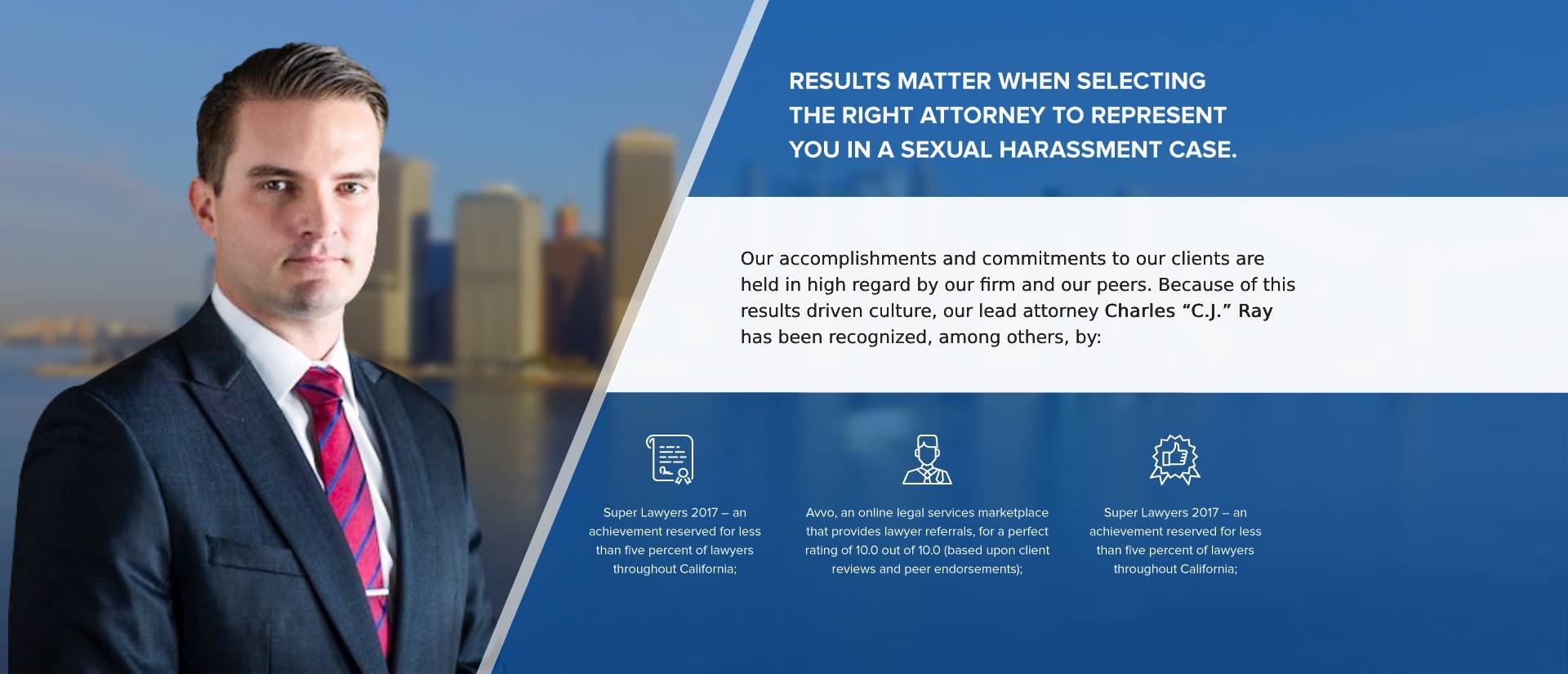Sexual harassment comes in various forms. Often, victims feel powerless, and many are silent, hoping that the behavior will stop on its own. However, ignoring harassment often leads to it escalating, and that toxic environment can affect mental health and job performance. It is important to take action against sexual harassment. Victims must feel empowered to report incidents, seek the support they deserve, and, most importantly, be protected. When they engage with personnel from human resources or legal, the perpetrators are held accountable, creating a safer workplace. Sadly, in other circumstances, victims suffer retaliation because of their reporting. However, victims can use the justice system to protect themselves and pursue justice.
If you or someone you know is a sexual harassment victim, you should seek help right away. These sensitive cases are what we at Sexual Harassment Attorney specialize in, and we can help you through the legal process. Do not ignore the harassment. Contact us today for a consultation and to kick-start your journey of reclaiming your safety and dignity. As someone who might have been sexually harassed, you have the rights and resources available to you. The information below will help you understand sexual harassment and how to protect your rights.
Sexual Harassment at a Glance
Sexual harassment is any unwelcome conduct of a sexual nature that is sufficiently severe or pervasive that it alters the conditions of the victim’s employment and creates an abusive work environment. Sexual harassment may involve, yet is in no way limited to:
- Verbal actions that degrade or sexualize someone in the workplace — These are inappropriate comments. Comments like these might be offensive jokes, lewd comments, and sexual innuendos. Some words can make you feel uncomfortable or disrespected, even if they are subtle or suggestive. When these comments persist, they create a hostile environment that erodes your feeling of safety and professionalism.
- Unwelcome advances — These advances are evident when someone keeps making romantic or sexual gestures, even if you express your lack of interest. They can go from constant requests for dates to suggestive messages. When ignored or rejected, but the behavior continues, it becomes harassment. These advances can cause you stress and anxiety that can interfere with your work and sense of well-being.
- Physical sexual harassment — It refers to any physical contact, including touching, whether it is brushing against you or something more explicit like groping or grabbing. Physical contact that you do not want is unwanted physical contact, and it involves violating your personal space. This kind of harassment tends to get worse and end up making you feel unsafe, vulnerable, and emotionally distressed.
It is in your best interest to take proactive steps to deal with sexual harassment. You can report incidents and get support. Human resources or legal professionals can help you hold offenders accountable and make your workplace safer. Federal laws that prohibit employment discrimination, including sexual harassment, are enforced by the U.S. Equal Employment Opportunity Commission (EEOC). The EEOC investigates complaints, determines whether reasonable cause exists to believe discrimination has occurred, and provides essential guidance and resources to educate employers and employees about their rights and responsibilities.
Apart from investigations, the EEOC provides mediation services to resolve disputes before they escalate to formal legal proceedings. If necessary, the agency can file lawsuits on behalf of victims to hold offenders legally accountable for their actions. This all-encompassing approach is intended to make work a safer, more respectful place.
Sexual harassment is governed by federal law in the United States, specifically by Title VII of the Civil Rights Act of 1964. This landmark legislation bans discrimination based on race, color, religion, sex, or national origin. Sexual harassment falls under the purview of Title VII as a form of sex discrimination.
Sexual harassment occurs to people of all genders. It is often thought to be something that only women will suffer from, but men experience it, too. Harassment is usually associated with power imbalances in the workplace because superiors exploit their authority over their juniors. And colleagues, of course, can also use professional interactions to intimidate, humiliate, or manipulate.
Harassment does not only occur in person. It happens through emails, text messages, social media, and virtual platforms. Unwanted advances via text or an inappropriate remark during a video call can be just as harmful as face-to-face harassment. However, digital communications usually have a crucial advantage. If harassment occurs through these channels, emails, messages, and screenshots make for an accurate record you can point to when you make your claims. Through this documentation, you can report the behavior to HR or authorities, forcing the harasser to be held accountable.
Sexual Harassment, Sexual Assault and Sexual Misconduct
Sexual harassment, sexual assault, and sexual misconduct can be confusing. They are distinct violations, but related concepts are defined differently with different forms of inappropriate behavior.
Sexual harassment, as already discussed, involves unwelcome sexual behaviors that make a person feel uncomfortable or afraid. Importantly, sexual harassment does not need to be physical. The focus is on how the behavior affects the victim and the environment. The discomfort, anxiety, and fear that victims often feel can seriously affect their emotional well-being and productivity.
On the other hand, sexual assault is considered a serious criminal offense that involves nonconsensual sexual contact with another individual. It involves acts that range from unwanted touching to acts of rape. Consent, or the lack thereof, is an integral part of defining sexual assault, which can be forced or coerced. Sexual assault has always been universally acknowledged as a serious offense. Offenders could face prosecution for the following forms of sexual assault:
- Sexual battery (Penal Code 243.4) — It is a crime when someone sexually touches you without your consent, unlawfully and intentionally. Unlike other instances of sexual assault, a person does not need to use or coerce force for the incident to be considered sexual battery. Rather, physical contact of a sexual nature is unwanted.
- Rape (Penal Code 261) — This offense involves nonconsensual sexual intercourse. Rape is defined as someone engaging in sexual intercourse with you against your will and without your consent. California law allows rape charges to be brought in a variety of circumstances, including when the offender uses coercion or threats, or when you are unable to consent because you are intoxicated or mentally incapacitated.
In a broader context, sexual misconduct is anything inappropriate, but not necessarily harassment or assault, that violates professional standards or policies. This is not making lewd remarks, not sharing explicit content, or engaging in relationships with subordinates. Sexual misconduct is not always a crime, but it is never acceptable, and it can compromise trust and respect in the workplace.
The Common Forms of Sexual Harassment
There are two forms of sexual harassment in the workplace, namely:
-
Quid pro quo
Some managerial team members could make it that job benefits like promotions, raises, or other employment perks depend on you submitting to their sexual advances. This situation makes it quid pro quo harassment. In this case, a superior may exploit his/her position of power to coercively manipulate you into sexually engaging in behavior they desire that you are not willing to engage in, in exchange for favorable treatment should you comply or negative consequences if you do not.
This kind of harassment creates a huge power imbalance that leaves you forced to choose between your career advancement and your personal boundaries. This can cause you to undergo great emotional turmoil when you have to decide whether or not to give in to unreasonable demands.
-
Hostile Work Environment
On the other hand, a hostile work environment is conduct that makes the workplace feel hostile, intimidating, or abusive. Harassment of this type may include:
- Offensive jokes.
- Derogatory comments.
- Unwanted touching.
- Bullying.
However, if this conduct becomes pervasive or severe enough, it creates a climate in which you may not feel safe or secure. A hostile work environment can wear on your confidence and job satisfaction to the point where it becomes difficult to focus on your responsibilities.
The Impact of Sexual Harassment
Sexual harassment is dismissed as minor and often leaves a profound and lasting impact on the victim. Even what may seem harmless behavior can have significant effects on your emotional well-being and cause long-term psychological problems. You do not just feel uncomfortable at the moment, you can have ongoing anxiety, stress, and a sharp decline in self-esteem. These emotional burdens add up over time and can become more serious mental health issues, like depression or posttraumatic stress, long after the harassment is over.
Harassment in the professional space can make you feel unsafe and like you do not belong. It creates a hostile work environment that prevents you from focusing, collaborating, or feeling valued. You may feel the need to pull away from colleagues or struggle with productivity, preventing you from growing your career. Often, victims are afraid to speak out because they fear retaliation or further harassment. This makes the emotional toll worse and perpetuates the toxic cycle.
The impact does not end at the workplace. Harassment can exhaust personal relationships and daily life and make it difficult to maintain friendships, family connections, and even ordinary activities.
Sexual harassment also affects people that you confide in. Sharing your experience with a friend, family member, or colleague loads them with a huge emotional burden. They may become angry, helpless, or distressed as they see your pain. It can provoke this emotional response, with the sense of responsibility and anxiety heightened by the feeling they can or should be able to help or protect you.
Confiding in the person can strain your relationship with them because they know your suffering. This could cause tension or discomfort for them, as they may attempt to support you while trying to manage their feelings. They may also be stressed or afraid to speak up on your behalf or confront the harasser for fear of exacting the same treatment.
Can I Be a Victim of Sexual Harassment if I Work Online?
You can face sexual harassment while working online, even if you are not physically present in an office. New avenues have been created for inappropriate behavior with the growth of remote work and dependency on digital communication. There are multiple types of sexual harassment in virtual settings, for example:
- Inappropriate emails.
- Unsolicited messages on social media.
- Offensive remarks in video calls.
Harassment can occur in your online workplace through direct messaging apps, video conferencing software, or collaboration tools like Zoom, Slack, and Microsoft Teams. These behaviors can lead to a toxic environment, like what you would find in a regular office. As a victim of online sexual harassment, you may feel isolated and vulnerable, and this is even worse when there is no face-to-face interaction. Digital communication dynamics can make it even harder to confront harassers or report incidents to your supervisor.
Online platforms that provide anonymity may facilitate inappropriate behavior by some because they do not feel as accountable for their actions. However, this is still a grave issue that has serious emotional and psychological repercussions for you.
People who work online and fall victim to sexual harassment often quit. However, this does not mean you cannot pursue justice. All you need to do is get in touch with a sexual harassment attorney for assistance.
Sexual Harassment for the Young Population
The youth are very active in the workforce and can easily be sexually harassed. Usually, young workers bring fresh energy and perspectives to their work, but they also tend to be more susceptible to inappropriate behavior because of inexperience. Often, it is because they struggle to recognize harassment or what to do with it, and as they enter the workforce for the first time, they might feel confused and anxious.
Supervisors, coworkers, and customers can harass young employees in the workplace. However, it can be particularly intimidating for them to report incidents when the offender has a position of authority. That imbalance breeds silence, where young workers are besieged with harassment but fail to speak about it for fear of retaliation or ending their careers.
The digital environment also complicates things. These young employees spend a lot of time on social media and messaging platforms, using this form of communication so often that it might be challenging to identify harassment. Anonymity online may make harassers even bolder, exacerbating the problem for victims who seek help.
Youth@Work is a program created by the U.S. Equal Employment Opportunity Commission for reporting sexual harassment. This initiative covers workplace issues related to youth, such as sexual harassment and other types of discrimination.
Protections Against Retaliation in the Workplace
When you pursue an Equal Employment Opportunity Commission action, you have protections against retaliation. Activities including filing complaints, participation in investigations, resisting harassment, requesting reasonable accommodations, and inquiring about salary information are covered under this protection. These are protected activities under federal law, designed to give you the power to exercise your rights without fear of retaliatory consequences.
These protections rely to a large extent on the principle of reasonableness. Even if you do not use specific legal language, an action is reasonably related to a protected right if it is about your efforts to address discrimination or harassment. That means as long as your actions are of you asserting your rights, your actions are still protected.
This protected activity is illegal retaliation. Employers cannot punish you for protesting your rights or participating in the EEO process. Retaliation can be in many forms, like disciplinary actions such as:
- Reprimands.
- Demotions.
- Threats.
- Harassment.
Retaliation also includes increased scrutiny from supervisors, spreading false rumors, or creating a more difficult work environment. These behaviors foster a hostile work environment that discourages workers from speaking up about injustices.
However, that does not mean employers are barred from disciplining or firing you for legitimate, non-retaliatory, and non-discriminatory reasons. If you fail to meet established performance standards or violate company policies unrelated to your protected activities, the employer has a right to take appropriate action.
Find a Sexual Harassment Attorney Near Me
Sexual harassment can be a harrowing ordeal to go through. It can take a serious emotional toll, leaving you feeling isolated and vulnerable. The difficulty is further compounded by the risk of speaking out or seeking help and facing retaliation. Job loss, demotion, and a hostile work environment are all forms of retaliation, which make it even harder for you to resolve the problem.
In these challenging situations, getting the support of an experienced sexual harassment attorney makes a big difference. Sexual harassment cases are quite complicated. Attorneys can help you gather the needed evidence, record your experiences, and devise an ideal strategy for dealing with the harassment. Further, they can empower you to face retaliation, ensuring your rights remain protected.
If you are being sexually harassed or retaliated against, you should seek help from a professional. Contact the Sexual Harassment Attorney for assistance. Our experienced team is committed to helping you reclaim your rights and get the justice you deserve. Do not let harassment go unchecked. Take the crucial first step towards your safety and well-being by contacting us at 800-905-1856.



